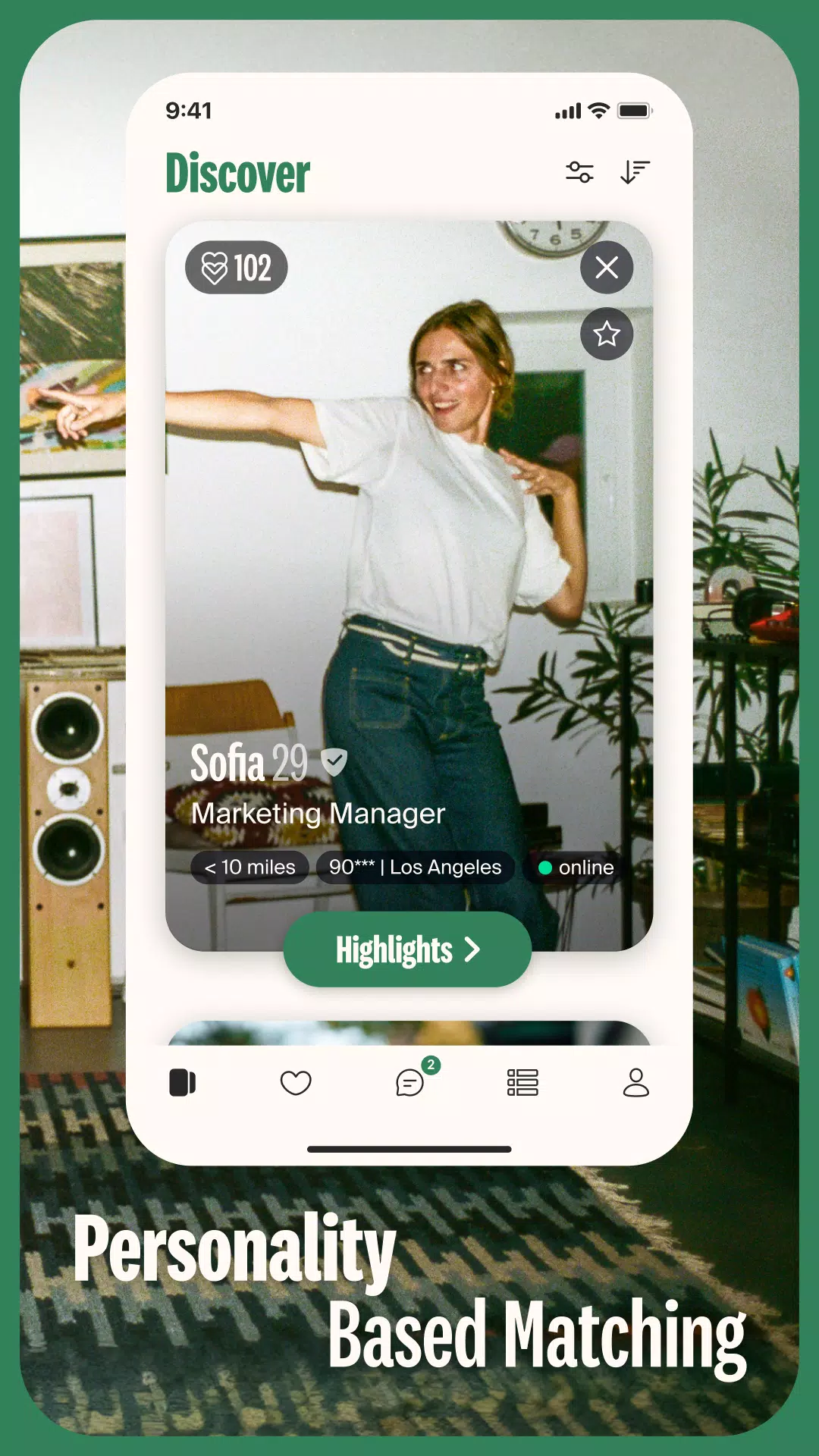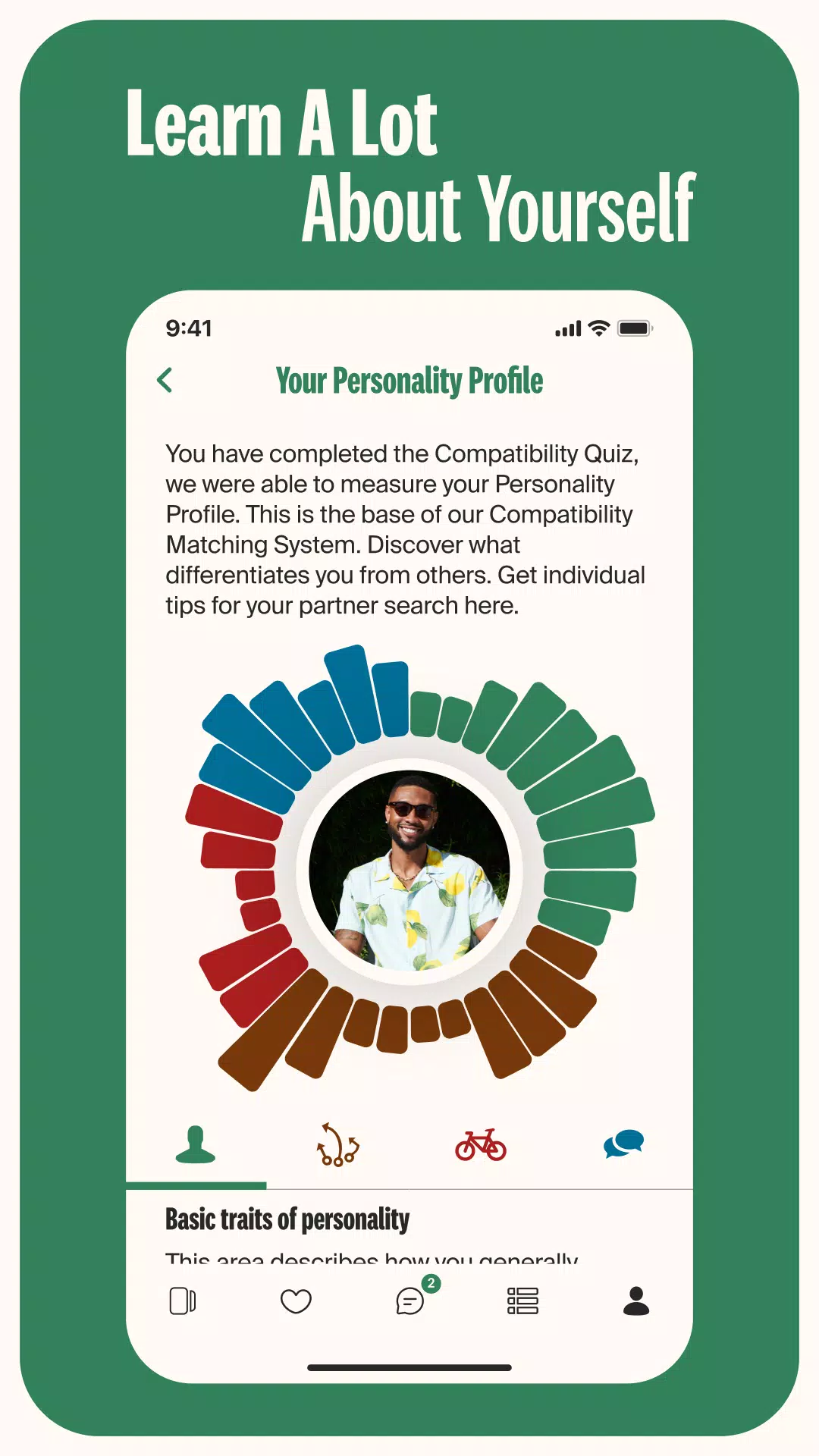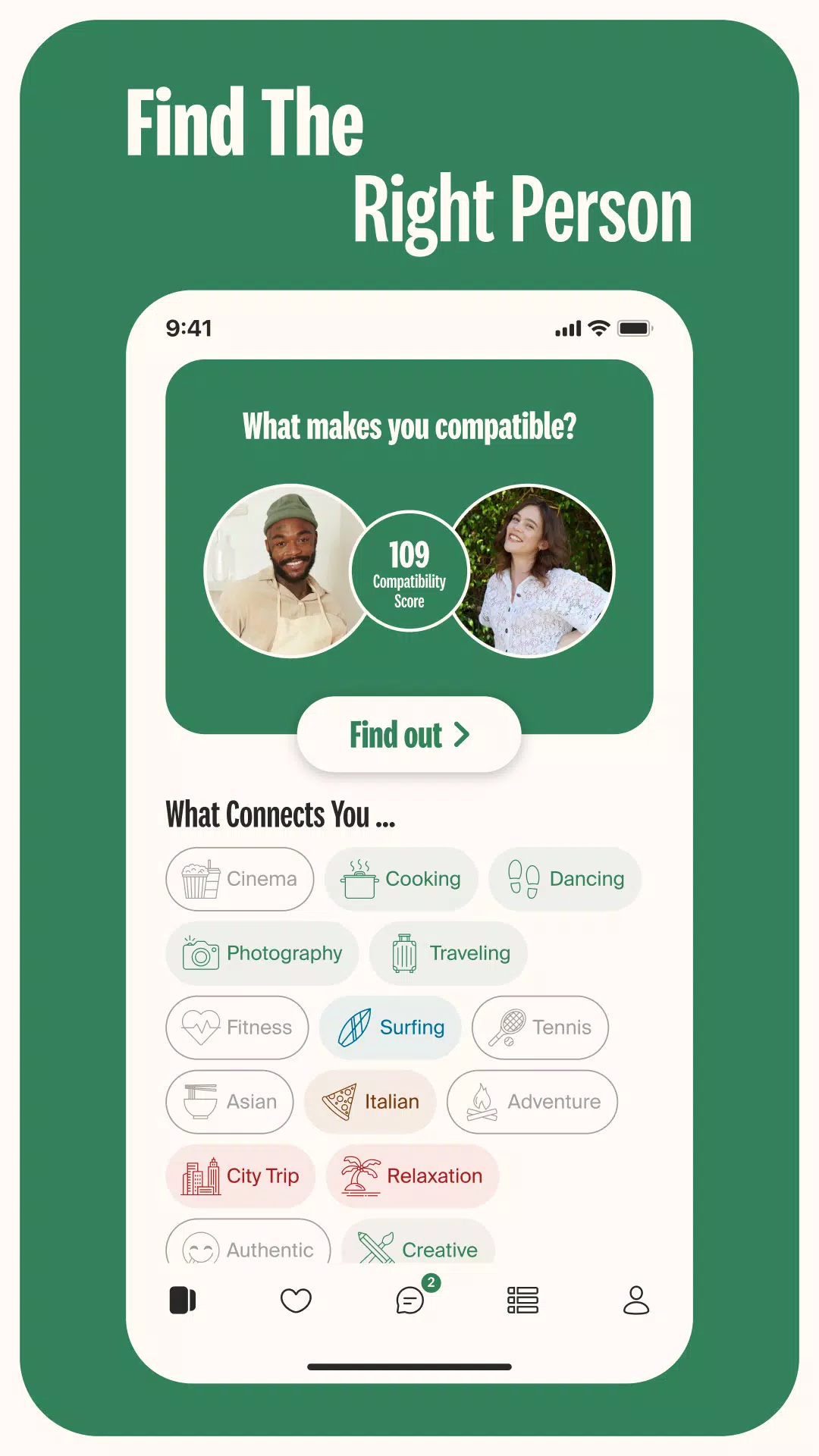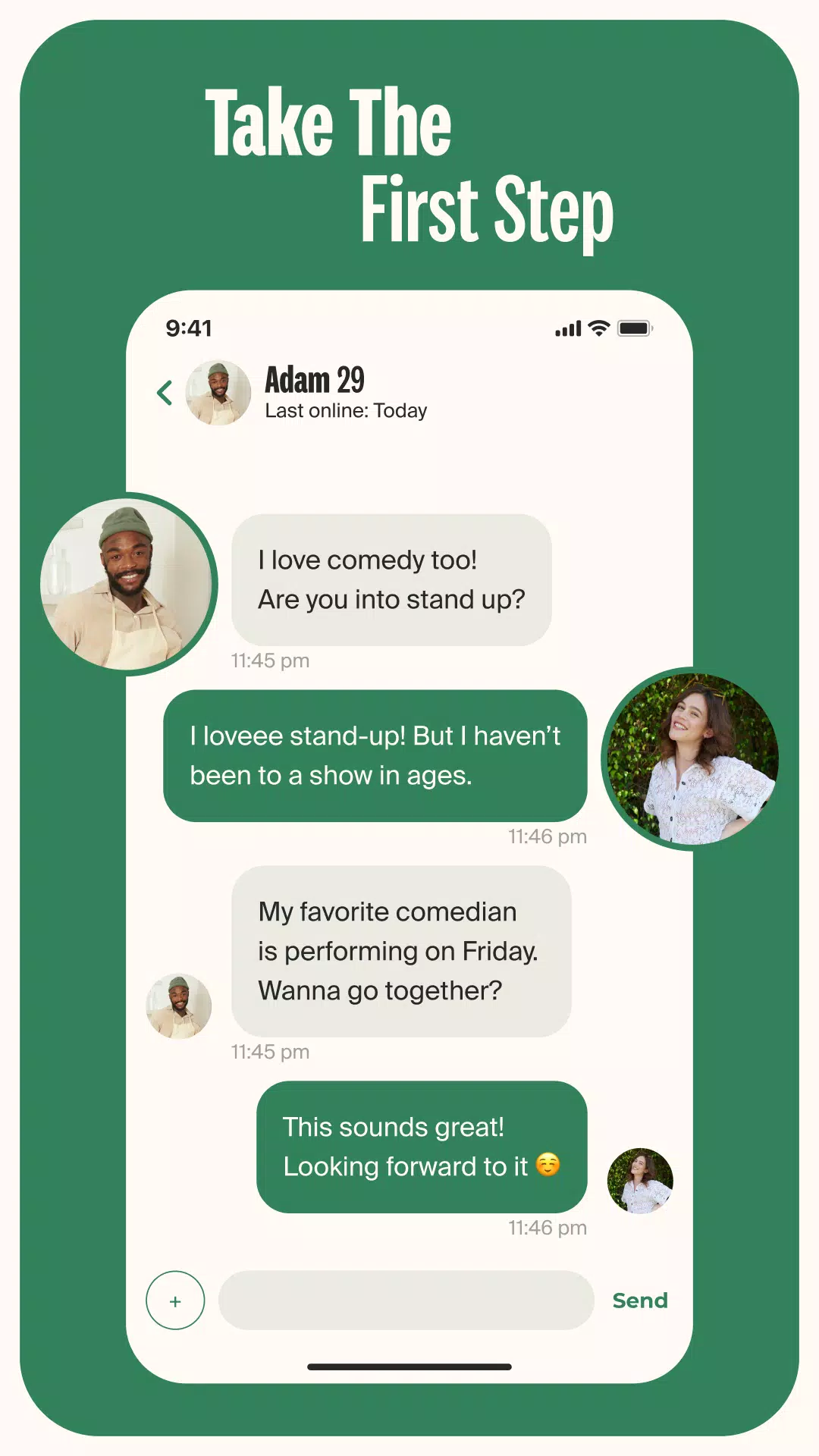eHarmony Dating App: A Detailed Guide
eHarmony is one of the most well-known and respected dating platforms worldwide, particularly favored by individuals seeking serious, long-term relationships. Launched in 2000 by clinical psychologist Dr. Neil Clark Warren, eHarmony revolutionized online dating by focusing on compatibility and providing a scientifically-based matching system. Over the years, it has developed into a trusted app, especially for those who prioritize deep emotional connections and shared values. Below is a comprehensive overview of eHarmony, its features, user experience, and what makes it stand out from other dating apps.
1. Introduction to eHarmony
eHarmony has built its reputation as a platform designed to help people find meaningful, lasting relationships. The app uses a robust compatibility matching system based on personality assessments and shared life goals, setting it apart from many other apps that rely more on superficial profiles or simple algorithms.
- Launch Year: 2000
- Founder: Dr. Neil Clark Warren
- Headquarters: Los Angeles, California, USA
- Key Appeal: Deep compatibility matching, focus on serious relationships, guided user experience.
2. eHarmony Features and Functionalities
eHarmony is known for its comprehensive, science-backed approach to online dating. Below are some key features that make eHarmony a unique platform.
2.1 Compatibility Questionnaire
- Length: The eHarmony sign-up process includes a detailed questionnaire that takes approximately 20-30 minutes to complete. This assessment is designed to capture various aspects of your personality, preferences, and relationship goals.
- Questions: The questionnaire covers a wide range of topics, including values, interests, habits, emotional intelligence, and life outlook, to assess long-term compatibility.
- Purpose: The data collected from this questionnaire is used to match you with people who share your core values and lifestyle preferences, making eHarmony highly suitable for individuals looking for committed, long-term relationships.
2.2 Matchmaking System
- Compatibility Matching System (CMS): eHarmony’s proprietary matching algorithm takes the results of your compatibility test and uses it to suggest people with similar life goals and personality traits.
- Match Suggestions: Unlike other apps that provide a constant stream of potential matches, eHarmony provides a curated selection of “matches” based on deep compatibility. Users are suggested a limited number of profiles each day.
- Communication Tools: eHarmony offers various ways to communicate with matches, such as:
- Icebreaker Questions: To help start a conversation.
- Email: Allows you to send messages once a match is established.
- Questionnaires and Profiles: Users can further explore their matches’ interests through interactive prompts and detailed profiles.
2.3 Profile Setup and Customization
- Detailed Profiles: eHarmony encourages users to create comprehensive profiles, focusing on personality, values, and lifestyle. This helps facilitate matches based on long-term compatibility, rather than just physical appearance.
- Photos: Users can upload photos, although eHarmony limits the number of images you can display at once. The emphasis is more on the profile content than just looks.
- Relationship Goals: The app provides options to specify what kind of relationship you’re looking for, whether it’s casual dating, a long-term relationship, or marriage.
2.4 eHarmony App Features
- Mobile Compatibility: eHarmony is available on both iOS and Android devices, with a mobile app that mirrors the functionality of the desktop version. The app has features like notifications, matches, and messages on the go.
- Daily Matches: Members are notified daily of new matches that meet their compatibility criteria, ensuring that users don’t feel overwhelmed by an influx of options.
- Communication Features: Besides sending messages, users can use predefined prompts to start conversations. eHarmony also supports voice and video calls for a more personalized interaction.
- Profile Visibility: eHarmony offers a feature where members can see who has viewed their profile or who is interested in them (for premium users).
3. Pricing and Subscription Plans
eHarmony is a premium subscription-based service, meaning that the basic membership is quite limited compared to other dating platforms. However, it does offer valuable features, such as the ability to browse matches and send messages, to paid members.
3.1 Free Membership (Limited Features)
- Profile Creation: You can create a profile, take the compatibility test, and browse matches.
- View Matches: Free members can see their matches, but they are limited in terms of communication and interaction with other members.
- Limited Communication: Free users can’t directly message their matches but can “Like” them, although this is a very limited form of interaction.
3.2 Premium Membership (Full Access)
To unlock the full suite of features, users must subscribe to one of eHarmony’s premium plans:
- 1-Month Plan: Offers the full range of features for one month, including unlimited messaging, viewing photos, and detailed search filters.
- 3-Month Plan: Offers a discounted rate per month for a three-month commitment.
- 6-Month Plan: The most cost-effective plan, giving you access to eHarmony’s premium features for six months.
Premium Features Include:
- Unlimited Messaging: Send messages to anyone on the platform.
- Match Details: See detailed information about your matches, including who has viewed your profile.
- Read Receipts: Know when your messages have been read.
- Priority Support: Access customer service and support for any issues you may encounter on the platform.
4. User Experience on eHarmony
4.1 Registration Process
- Account Creation: Signing up for eHarmony requires entering an email address, setting up a password, and creating a username.
- Compatibility Questionnaire: Once registered, users take the extensive personality questionnaire that helps eHarmony’s matching algorithm determine the most suitable partners.
- Profile Setup: After completing the questionnaire, users can upload photos and fill in their profile information.
- Profile Review: eHarmony’s system reviews profiles, so it’s a more structured experience compared to apps like Tinder or Bumble. This helps ensure the quality of user interactions.
4.2 User Interface and Design
- Clean and Professional Interface: eHarmony’s user interface is designed to focus on the profiles and matches. It’s simple, clean, and easy to navigate, with no distractions.
- Mobile App Design: The mobile version of the app mirrors the desktop site in terms of design and functionality, making it easy for users to access all their features on their smartphones.
5. eHarmony Pros and Cons
5.1 Pros
- Compatibility Matching: eHarmony’s scientifically-based matching system is highly effective for people seeking serious relationships, with a focus on long-term compatibility.
- User Demographics: eHarmony tends to attract users who are looking for committed, long-term relationships, which helps create a more focused and serious dating environment.
- Comprehensive Profiles: The profile system encourages users to provide more meaningful details about themselves, which facilitates better matches and more meaningful connections.
- Guided Communication: Tools like “Icebreakers” help initiate conversations, making it easier to get started with someone you’re interested in.
5.2 Cons
- Expensive: The subscription fees for full access can be higher than some other dating apps, making it less accessible for budget-conscious users.
- Limited Free Features: The free version of eHarmony is highly restricted, with no direct messaging or access to most features unless you upgrade to a premium plan.
- Longer Setup Time: The compatibility questionnaire can be time-consuming, which might be a drawback for users who want a quicker, more casual approach to dating.
- Fewer Matches Daily: eHarmony limits the number of matches shown each day, which could be frustrating for people looking for more options or quicker connections.
6. Privacy and Safety on eHarmony
6.1 Privacy Features
- Data Protection: eHarmony takes user privacy seriously and adheres to strict data protection policies, including encryption to keep your personal information safe.
- Privacy Settings: Users can adjust privacy settings, deciding who can see their profile and who can message them.
6.2 Safety Tips
- Verification: eHarmony requires users to fill out detailed profiles and questionnaires, helping create a sense of authenticity and reducing the chances of encountering fake profiles.
- Blocking and Reporting: If you encounter inappropriate behavior or a suspicious profile, eHarmony allows users to block and report problematic users.
7. eHarmony Alternatives
While eHarmony is ideal for those seeking serious, long-term relationships, other dating apps cater to different needs:
- Match.com: Another long-established platform focused on serious dating, with a similar matching system to eHarmony.
- OkCupid: Offers compatibility-based matching but with more flexibility in terms of relationship preferences.
- Tinder: Known for more casual dating and quick connections, focused on a younger audience.
- Bumble: A dating app that empowers women to make the first move, offering both casual and serious dating options.
8. Conclusion
eHarmony remains one of the top choices for individuals seeking meaningful and lasting relationships. Its scientifically-driven matching algorithm and focus on compatibility make it a great platform for those serious about finding a partner. However, the higher subscription cost and lengthy profile setup process may not suit everyone, especially those looking for a more casual or fast-paced dating experience.
For those committed to finding a life partner, eHarmony provides a structured and efficient way to meet like-minded individuals. If you value compatibility, personal growth, and a serious relationship, eHarmony is an excellent choice to consider.










